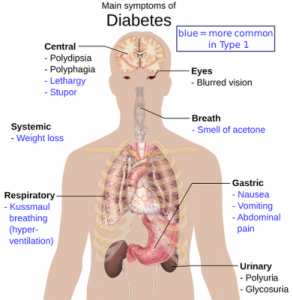Higher serum selenium concentrations are associated with a statistically significant 31% lower all-cause mortality and a statistically significant 34% lower heart disease mortality in individuals with type-2 diabetes [Qiu 2021].
 This is the conclusion of researchers who conducted a relatively large cohort study of patients with diabetes with a long follow-up period. They analyzed the data from 3199 American adults with type-2 diabetes; the average follow-up period was 12.6 years [Qiu 2021].
This is the conclusion of researchers who conducted a relatively large cohort study of patients with diabetes with a long follow-up period. They analyzed the data from 3199 American adults with type-2 diabetes; the average follow-up period was 12.6 years [Qiu 2021].
During that follow-up period, 1693 deaths were documented, including 425 heart disease deaths [Qiu 2021].

